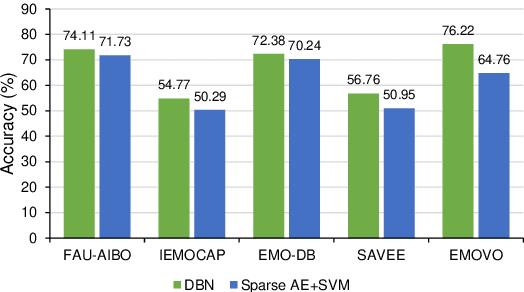Transfer Learning for Improving Speech Emotion Classification Accuracy
Paper and Code
Mar 26, 2018



The majority of existing speech emotion recognition research focuses on automatic emotion detection using training and testing data from same corpus collected under the same conditions. The performance of such systems has been shown to drop significantly in cross-corpus and cross-language scenarios. To address the problem, this paper exploits a transfer learning technique to improve the performance of speech emotion recognition systems that is novel in cross-language and cross-corpus scenarios. Evaluations on five different corpora in three different languages show that Deep Belief Networks (DBNs) offer better accuracy than previous approaches on cross-corpus emotion recognition, relative to a Sparse Autoencoder and SVM baseline system. Results also suggest that using a large number of languages for training and using a small fraction of the target data in training can significantly boost accuracy compared with baseline also for the corpus with limited training examples.
 Add to Chrome
Add to Chrome Add to Firefox
Add to Firefox Add to Edge
Add to Edge